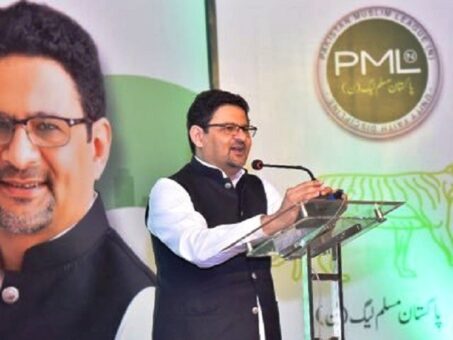Miftah Ismail, Former Federal Minister for Finance, has pointed out key reasons behind the massive depreciation in Pak Rupee (PKR) against the dollar.
Ismail, who is also General Secretary of PML-N Sindh, in his Tweet on Sundh pointed out a thread on the four main reasons for the recent precipitous decline in the value of the rupee.
A: Uncertainty about the renewal of the IMF program
B: Largest trade deficit and fastest-growing imports in history
C: Fourth highest inflation rates among major countries.
D: Rapid increase in the money supply.
Ismail explained that uncertainty about the renewal of the IMF program behind the rupee weakness.
The former finance minister said: “Our program was ‘revived’ earlier this year and we were supposed to get a $1 billion tranche in July 2021. We are now in November and still, there isn’t an agreement. This is giving markets jitters.”
In his opinion largest trade deficit and fastest-growing imports are the second major reason for the rupee fall.
“We are on track for imports of $75 billion or over 24 per cent of the GDP. Both these are the highest in history. This year exports will cover only 37 per cent of imports, down from 44 per cent in 2018. We are moving in the wrong direction.”
Our trade deficit in on track to be $47 billion or 15 per cent of the GDP. Again both numbers are highest in the history. Current account deficit will be around 5 per cent of the GDP. But for the healthy remittances due to decreased travel etc. we would have recorded the second-highest current account deficit
The former finance minister said that in our history, after the one of 8.1 per cent in 2007/2008, the last year of Gen. Musharraf. The increased net demand of dollars from foreign trade is thus putting pressure on the Pak rupee. “Until we slow down imports or increase exports, the rupee will continue to be under pressure.”
Another reason highlighted by the former finance minister is the highest inflation rates among major countries.
A recent issue of The Economist showed that Pak has the fourth-highest inflation among major counties, two of whom we don’t even have much trade with. “We also have the highest inflation in South Asia.”
Given that our inflation is more than our trading partners, our exports goods become more expensive and import goods become cheaper. This increases our real effective exchange rate and puts pressure on the rupee.
Miftah Ismail continued that our money supply has grown from Rs 4.7 trillion to Rs 7 trillion, an increase of 49 per cent.
Dr Hafeez Pasha estimates that a 1 per cent increase in money forces a 0.6 per cent rise in inflation. The primary cause of money supply increase is record-high government budget deficits.
“There are other reasons for the continuous devaluation, political uncertainty for one, but these four —-interlinked as they are— I think are the major reasons.”
Federal Minister for Energy Hammad Azhar in his tweet replied to Miftah Ismail saying: “I thought Miftah sahib was reminiscing about PML-N’s economy. Back then they managed to create such conditions without Covid shocks. The truth is that trade deficit now has risen due to price effect (same goods but more $ outflow due to high prices) rather than volume effect.”
